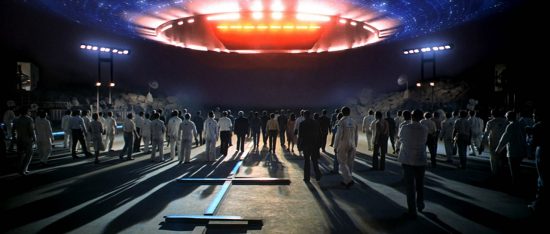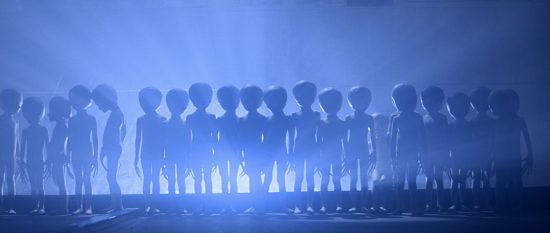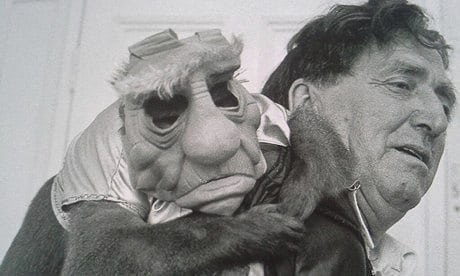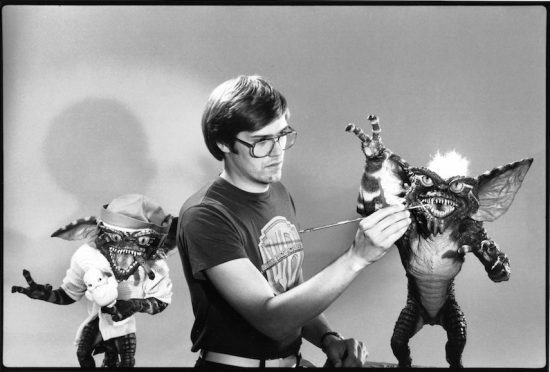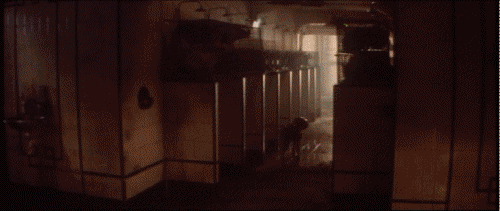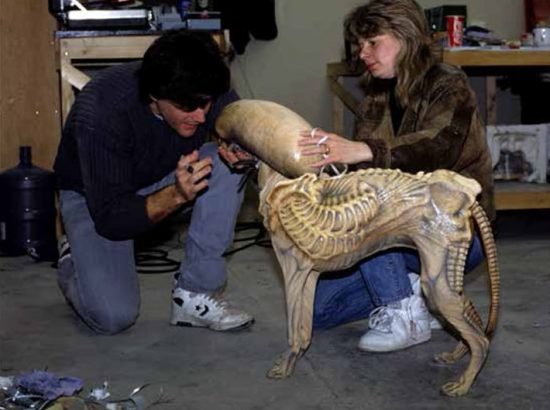A Monkey in Spandex: How legendary film creatures were originally designed as animals in suits
Remember the ending to Close Encounters of the Third Kind? Through the cacophony of light and music, the gigantic mothership doors open. Bathed in ethereal blue light, an alien figure reveals itself, first contact! As the shape glides closer it becomes clear. It’s a spandex-clad orangutan on roller skates.
OK, that sounds farcical, but it could have been all so real. Even with the possibilities of CGI now, cinemagoers still have an affinity for practical effects, the kind that visionaries like Steven Spielberg and George Lucas used when computers were in their infancy. We can still marvel at Close Encounters’ E.Ts or those destructive Gremlins but really effects artists didn’t know where to start in realising such adventurous stories.
That still might not excuse plans to whack a monkey in a suit but in reality, it was often the sanest answer when the technology for convincing creatures wasn’t available or cost millions of dollars. Luckily, attempts to make famous film creatures we now know and love with animals, failed miserably.
Close Encounters of the Third Kind
Steven Spielberg knew that for the finale of his extra-terrestrial spectacle he would need to reveal his cosmic visitors. The script was light on descriptions though, abstractly defining the aliens as Humanoid and childlike, but the director “wanted the aliens to look like aliens, not people in costumes”. No easy feat for a film that was over budget. So to create his alien, Spielberg first turned to a creature closer to home.
His initial idea was to use an Orangutan dressed in a spandex suit with an alien head. To add to the otherworldliness Spielberg thought “it would be interesting to put him on roller skates, and push him off a Mylar ramp so it looked like he was floating. Well, it all went wrong”. The concept progressed to a screen-test but when the primate was pushed down the ramp, it simply clung onto his handler leaving Spielberg to recall “I realised in about five minutes that wasn’t going to work”.
Scrapping the idea, the E.Ts (designed by Carlo Rambaldi) were instead a mixture of marionette and animatronic puppets with hundreds of girls from a local school dressed in specially designed suits. To complete the illusion, cinematographer Vilmos Zsigmond employed strong backlighting and overexposed the scenes to give the aliens an ethereal effect. A much better result then, but it’s a shame the test footage has never been released!
The Empire Strikes Back
For a production which followed A New Hope, involving an entire Cantina of bizarre alien creatures, its sequel tried some ‘interesting’ methods to bring Yoda to life. The wizened 900-year-old mentor at the heart of Empire went through a design evolution. Named “ Buffy” in the scripts first draft (by Leigh Brackett) and later “Minch Yoda”, early concept designs imagined a bearded gnome-like figure in a pointed hat.
To realise a plausible Jedi Master, George Lucas deemed early animatronics inadequate. Instead, he opted to try a monkey kitted out with a mask and Yoda’s famous cane. Detailed in JW Rinzler’s The Making of The Empire Strikes Back, the monkey was trained to hold the cane but was more intent on running around and pulling off its mask. After failing a screen-test, a member of the crew, who worked on Kubrick’s 2001 ape scenes, said “the monkey’s just going to pull off the mask over and over again. It’s never going to work.”
This prompted Lucas and director Irvin Kershner to re-think, opting for a blend of animatronics and puppetry created by Stuart Freeborn. The eventual puppet was given a face partially based on Freeborn himself, but to add a sense of innate intelligence Yoda was given the eye shape of Einstein. The character of Yoda wouldn’t also be complete without the work Franz Oz, puppeteer and voice of the famous Jedi master.
Gremlins
Creature and make-up effects supremo Chris Walas wrote his first reaction to Gremlins by scrawling the word “HA!” on the front page of the script, explaining in an interview to Empire “I didn’t think it could be done, the technology didn’t exist”. This ambitious story of ghoulish monsters that cause havoc in small town America, originated from a Christopher Columbus script, later known for films such as the Goonies and Mrs Doubtfire his script was quite dark, calling for the Gremlins to remove the mothers head and roll it down the stairs and kill the family dog!
Once the tone was lightened, the question for director Joe Dante was still how to make these small creatures, he told Empire “First we talked about stop-motion. Then realised we’d still be shooting if we did that. And at one point someone, I hope it wasn’t me, suggested we try monkeys in Gremlin suits”. A test was quickly arranged in which a Rhesus monkey was kitted out in a Gremlin headpiece. However, it came to a sticky end, as the monkey proceeded to “careen around the editing room, pooping on everything in terror”.
Chris Walas was sent back to the drawing board, ultimately using animatronic puppets for Gizmo and the maniacal gremlins. As Dante recalled in an interview “We managed to figure out enough ways to cheat so that we could make Gizmo look real. We knew there was no way he was going to walk. So we figured the hero could carry him around in a backpack, and he could stick his head out”. Simple tricks often are the most effective.
Alien 3
Alien 3 is a film synonymous with behind the scenes trouble, a production that famously chewed up and spat out a slew of attached writers and directors before settling with David Fincher. The film planned a different take on the now famous Xenomorph, with alien inheriting some characteristics of its original host. The script called for an alien to have gestated inside an Ox (This was changed to a dog, except in the Assembly cut). Instead of the usual bipedal aliens, Alien 3s Xenomorph would need to walk on all fours.
Fincher wanted to shoot the new-born beast making a quick exit on all fours. Previously the monster had been a man in a suit, but this new challenge left effects artists puzzling about how to achieve the speed and movement required. Someone then had the bright idea of using a dog. A whippet was dressed in a Xenomorph suit at a screen test and shot running away down a corridor. No surprises for guessing that it was a failure, not only would the dog not wear a mask but it moved, well like a dog.
It proved too funny to be taken seriously, replaced instead by a more convincing (but less mobile) rod puppet. The movement of the alien was replaced by employing a point of view shot of it running away, meaning no need to create any effect at all.
It’s too easy to look back at some of these stories and laugh, now that CGI has given filmmakers limitless possibilities to create practically anything. This doesn’t give the creature effects artists their due, throughout the time before CGI they continued to conjure remarkable creatures through pioneering animatronics, ingenious puppetry and simple in camera trickery. It’s no wonder then, that part of the evolution of these effects was that any idea was trialled, even if it involved an animal. We can be glad these screen tests failed, now only for the amazing effects we ended up with but for the welfare of the animals as well.

